Skate or Die
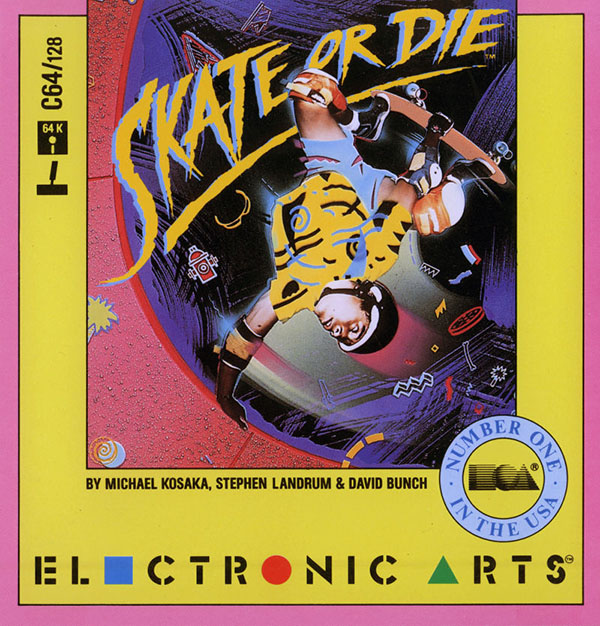 Developed and released for the Commodore 64 by Electronic Arts: Programming by Stephen Landrum and David Bunch. Graphics by Michael Kosaka. Sound effects by Christopher Grigg. Music by Rob Hubbard and Kyle Granger. Product management by Kelly Flock. Associate producer: Don Traeger. Technical support: David Maynard. Art director: Nancy L. Wong.
Developed and released for the Commodore 64 by Electronic Arts: Programming by Stephen Landrum and David Bunch. Graphics by Michael Kosaka. Sound effects by Christopher Grigg. Music by Rob Hubbard and Kyle Granger. Product management by Kelly Flock. Associate producer: Don Traeger. Technical support: David Maynard. Art director: Nancy L. Wong.
Skate or Die
What I learned making content and editorial at Electronic ArtsThe first title published by the behemoth video game corporation was Skate or Die in 1987, for the Commodore-64. Many people don’t know this or think this when they hear EA or EA SPORTS it’s in the game. If you haven’t played Skate or Die you aren’t missing out on much. It was an impossibly hard simulator of halfpipe, downhill, and gladiator-like pool fighting skateboarding. If you were really talented (or just spent way too much time playing it) you’d maybe land a handstand. Back in those days games were ametuer. It was the beginning. The game’s release also just so happened to be during the early days of Silicon Valley in general.
You see, EA was founded in 1982 by Trip Hawkins, while he was working for this other corporation you may have heard of called Apple Inc. It’s the classic Silicon Valley story you’ve heard on repeat since computers became cool sometime around the late 1990s. One of a Stanford graduate starting a dreamy computer software company. Skate or Die was the earliest offering. It now seems more fitting to the San Francisco of yesteryear than today.
My story isn’t about Skate or Die, Trip, or the history of EA and Silicon Valley. Rather it’s about my love of gaming and video games and my experience working for the company and in an industry I adore. This is about what I did, how it affected the business and myself, and where I think I am headed now. Before you read any further, know that this is in memoritorium and is a therapy of sorts for myself, nothing more or less. The opinions expressed in this piece are my own and obviously are not warranted or sponsored by Electronic Arts or their studios or partners. I was laid off from EA in a mass layoff a few months ago, April 2019.
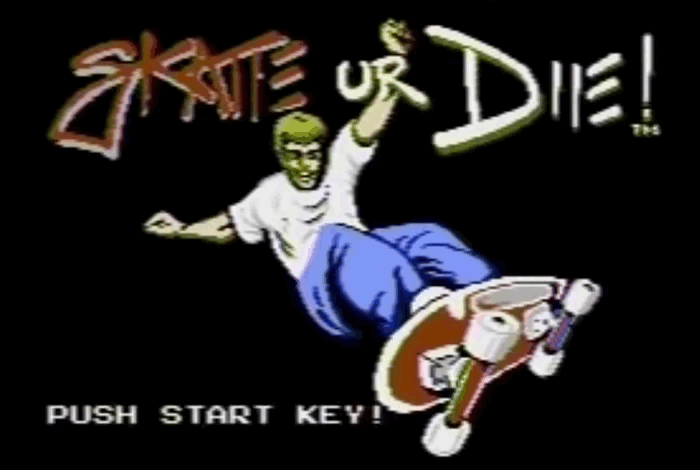
Press start key!
A boy finding his love for video gamesSometime around 1987 a starry eyed little boy, born in (and of) the early 80’s zeitgeist, found his love of video games. There was something wrong with little boys that didn’t play video games in this era. Friends were ranked on their cartridge collections and completion percentages of Metroid or Final Fantasy III. I was so endeared with the medium I would routinely meet up with a friend to design our own Mega Man maps. We did it with pencil and grid paper. He’d focus on the boss and I would create the level. At nine years old so we didn’t have computers yet and even if we’d had computers the 8-bit programming that made up these early games would have been super challenging. This is why Skate or Die sucked to play and took five years to develop. Remember EA started in ‘82 and published its first title in ‘87.
Early on video games were relentlessly hard to play—just ask anyone who beat Goblins and Ghouls or PunchOut. They weren’t responsive enough. They were laden with bugs and holes. Most of them were hard-coded and if they crashed or you spilled juice on the cartridge, the game and the save were gone forever. There were no backups or redundancies, just a good old piece of plastic with some chips in it. It might as well have been a cassette tape rewinding and forwarding on command.
Growing up in the ‘80s I was one of the many who daydreamt about playing video games, drew video games maps and characters in class, and play-acted out scenes from them. As I grew older the games grew with me. They got more angsty in the ‘90s when Mortal Combat was obsessed with Fatalities and Twisted Metal filled afternoons with missiles exploding out of an evil clowns’ ice-cream truck. Later I found storytelling of the likes I’d never seen before in Final Fantasy VII and Chrono Trigger (both still widely considered two of the best games ever). As adults, my brother’s and my love for football still manifests in regular Madden bouts, which, no matter how long it’s been since one of us played, are almost always too close to call.
Once out of college and onto the dropship of adult life I found community in a game called World of Warcraft. Like most departing from college, my friends and I had been dispersed across the country. One way we stayed together was to hang out and kill murlocs in the virtual world of Azeroth (insert murloc gurgling sound). For those of you not familiar with WoW, it’s an online game that is filled with real people playing trolls and paladins and other fantasy types. There were many late nights of raiding, or just talking about raiding. We built a guild with a website. We farmed items and put them in a bank for our members to utilize to play advanced end-game content. We were a fellowship of gamers. A collective in search of the same goals: to beat bosses…really really fun (not important) goals.
Being silly and having fun is why we play games!
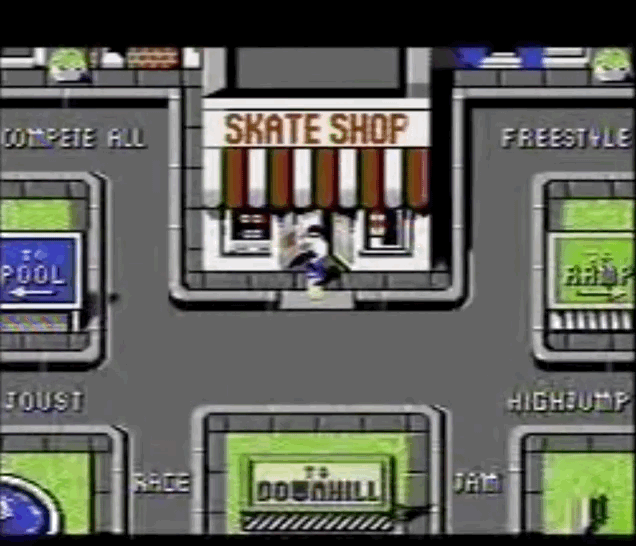
Getting in the game
How I got into the gaming industryYou can imagine my response when I got a phone call from a previous colleague asking if I wanted to join them at Electronic Arts. I was ecstatic! But, my WoW days ended as my friends started to drop in to life and do adulting things, like have kids or take responsibility for their careers. I had done the same, and my gaming days were a little distant. I’d pursued and completed my master’s degree in New York and soon after moved to LA. Then the Bay Area to work in tech. I no longer had time to consume video games, at least I thought. I said yes to come to EA—here was no thought, I knew I wanted to Skate or Die.
My friends that played WoW were my community. We still kept in touch. Nowadays that meant texting each other, but we stayed in touch nonetheless.
Subsequently, my wife, my 6 month old son, and I moved back to Los Angeles and settled in. I started soon after at EA as an Editor-in-Chief, Editorial Strategist. A fancy title but simple task, I supported the editorial and content teams in strategy and product implementation. That meant things like gettingdata for articles from developers and amiplifying content through Google’s AMP program.
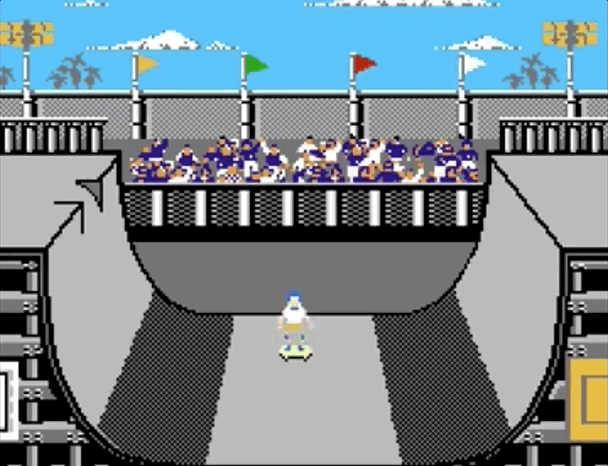
Ripping and dipping
What we madeThe company was changing its approach. A pivot of the variety of “content is king”. EA had found itself stagnant in the market, making the same titles year over year to less and less fanfare. The market was good but their approach wasn’t sustainable and they knew it. Their response: create more content, better content, and a steady stream of it. Hence, we were brought on to create a newsroom. There was some vision, but not enough. It amounted to some random BCCs from higher ups asking us to spur“cultural moments” (still not sure what those are) or to “execute with global reach”. A fast reminder that buzzwords and acronyms and task forces are the cotton candy of leadership.
Our mission directive seemed simple though. We would build a media company inside a video game publishing company.
Upon arrival we were a team of three: myself, my boss who I’d worked with before, and a senior manager from a devastated marketing team. I later found out he was the last man standing from the multiple year culling the marketing departments had been laid to waste with.
We were assigned to look across the entire portfolio (12+ AAA games), an impossible task for three people. “Can you provide a centralized execution of content?” We’d do the best we could but we needed a team. There was a copy team and a content strategy team that we partnered with but we needed direct heads working with studios on specific titles (spoiler, we never got there). We quickly absorbed the copy and content strategy teams.
All the sudden we are twelve people. Still vastly underhanded.
That was the first year. Really, it was the honeymoon of any job, especially one that lights up your starry-eyed nine year old self like this one did for me. We hit the ground, pounding our fists with genuinely interesting work:
- We made some beautiful content rich sites for Mass Effect and Star Wars Battlefront II.
- We implemented GIFs and data journalism into our editorial.
- We built Easter eggs and community-driven content that were touched by hundreds of thousands of players.
- We created kits and services for our audiences to use in creating their own content on their own channels.
- We created a philosophical approach of telling human stories and acting as reporters to “stage and report”. (Sorry I know those are buzzwords. I’m not innocent either.)
- We created a lense through which we validated all our ideas.
- We built efficiencies across:
- Publishing (both web and social)
- CDNs
- Content Management
- Analytics
- Localization
- We wrote content strategies and held our publication accountable to them.
We had built (or we’re well on our way to building) a media company. It was like playing baseball in the majors.
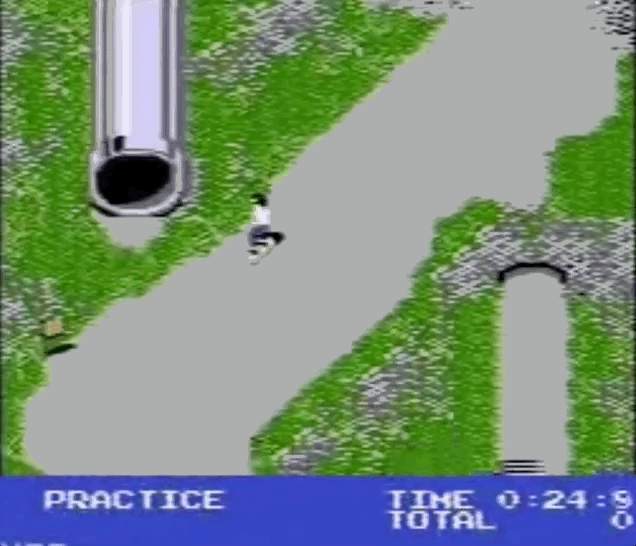
Skinning knees and elbows
And our impact on the businessOver the course of year one we built a team of nearly thirty comprised mostly of copywriters, content strategists, and a few editorial staff.
Our impact on the business was difficult to measure but we had our successes (however subjective they may be).
- We created editorial that is now standard practice for EA called the “This is” series.
- We created an easter egg in Battlefield engaging players of Battlefield about the announcement of a new title. The response was that more than half a million people logged in concurrently to watch the announcement livestream.
- We created regular updates on sports titles like FIFA and Madden with daily Twitch streams, custom web products, and regular updates from the developers
- We interviewed top FIFA, NBA, and NFL athletes and made full content pieces with them. Here are a few examples:
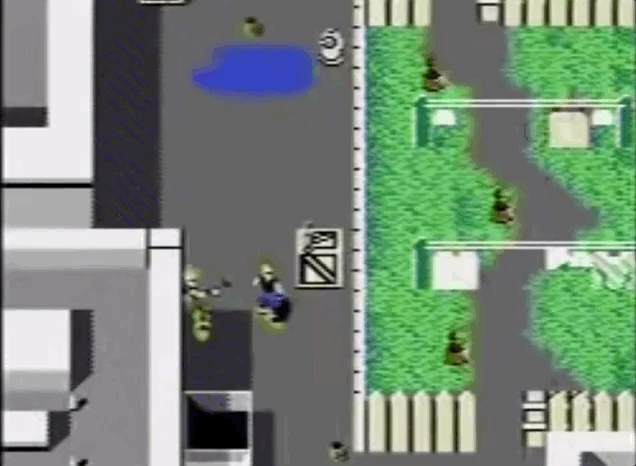
Watching out for gnarly
Two reasons the video game industry is only going to get worseMy perspective and a lot of those that have worked in gaming is that the gaming industry is rotten AF. What I mean by that I’ll do my best to explain two-fold.
-
One - it’s really hard to make video games at the expectations gamers have now. At least for AAA titles.
-
Two - it’s a tale we hear, too often now, of a business eating its own tail and being at conflict as to how to move forward with its product. It’s too focused on how to make ridiculous profits year over year for stakeholders.
My first reason: The product is too difficult to make. It takes too much time and requires too much work and advanced knowledge of 3D, annimation, and programming.
Think about a fruit tree, an apple tree, for this metaphor. When it blossoms in the spring it’s pretty but hardly useful to its owner. As the summer passes, its flowers begin to turn to fruit. In the fall the fruit is brilliantly ripe—calling to be plucked. In the ‘80s, gaming was the blossoming tree entering the summer. Then in the ‘90s the flower survived its summer boom. And continuing into the 2000s to ripened to a fruit.
As the industry grew and the games got remarkably better and more complicated, the business of making and publishing games growth was stunted.
As for our apple tree? Well, it’s got rotting fruit hanging on the tree now.
Games have continued to be set at a price point of $60, which is not enough to recoup the cost of making the thing. Publishers now, more and more, take on debt to build games and rely on monetization fromother ventures. These tactics are divisive and widely disliked. You may have heard of a little thing called loot boxes? The industry calls them micro-transaction, and, well, this is actually the premise of my next point.
My second reason: The business is eating its own tail and bis at conflict with itself.
The gaming industry is born of tech. Just look at Tripp’s voyage from Apple to starting EA fresh out of Stanford. Making games is software and making software is tech work. Tech work right now, in our postmodern age, is in the neanderthal stage. It’s just learning to start fires and not die from eating raw meat.
Gaming, interestingly enough, is where the term “burnout” originated. Studios were renowned for crunch time and expectations of long hours were the dues you paid for working on something you love. Working in the industry is predicated by accepting a horrible work/life balance.
The reason this can persist: accountability is non-existent. Leadership acts more like a conveyor belt for the loyal than rewarding those who actually listen to what people are saying. Look at the insane brain drain happening now at Activision because they laid off 800 people while giving a new CTO a massive bonus. People who built that company left and doubtless, the games will suffer.
I have a rational fear (I think it’s rational) that the gaming industry has in its wake built a dark army of people that are difficult to work with because they accepted the grind and lack of meritocracy these companies.. I hope I’m wrong.
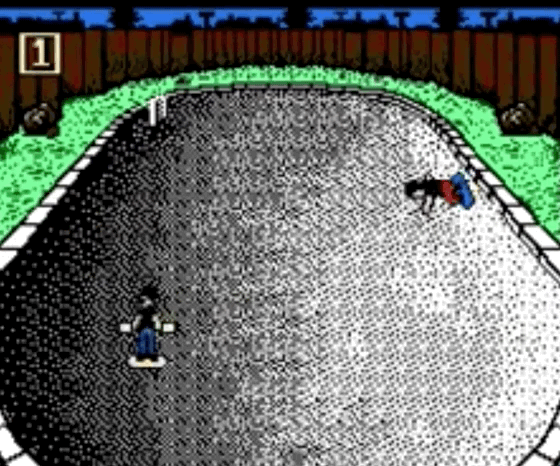
Pool-galdiator was never a skateboarding thing
What did I think I was getting into?Skate / Die / Start Over
When Tripp founded EA he wanted to make electronic art. I think. I am not Tripp and I have never met him so I can’t validate that. But I think I can make the assumption. I imagine a young engineer at Apple thinking, “we could make art out of this software, interactive art”. Simple if you think about it. Video Games are software interfaces that respond to your input and feedback. They’re games, yes, but really, they’re software first.
Like all software, there’s a learning curve to usability. We call this the users experience. I am an interaction designer by training so let me quickly explain how long it actually took software to get a grip on what good interactions look like.
Sometime around the late nineties, Steve Jobs met a fella named Cooper. Cooper was working on the interface design of medical equipment used mostly in surgery. Extremely specific technology applications that require robust systemization and reliable output while also having cohesive and usable operations. They weren’t trying to “delight” a user back then. Instead, they were simply making sure your heart didn’t stop while the doctor reads the defibrillator manual. The application of the users experience was paramount to the machine and software working properly.
Steve Jobs was, without skepticism, very interested in Cooper’s work because he had heard of this concept of the users experience or, put academically, the HCI (Human Computer Interaction) that Cooper was using to help surgeons. Steve wanted to incorporate it into his products. Once the iPhone released and changed the world, everyone wondered what the secret was to making such a ubiquitous product. It was the focus on the customer as a user, not a transaction. Thus, UX design and interaction design was born.
Video games took the same path as the rest of Silicon Valley software junkies: from therassic software to jurassic games to modern experiences. Unlike their neighbors, EA didn’t take the interaction design and user’s experience very seriously. Instead, they thought of the user as a transaction, and instrument of making money. This misstep led to them further and further down a capitalist pig spiral, eventually not giving a fuck and outright treating theirusers as unlucky guests at a micro-transaction surprise party.
What made video games so interesting to that starry eyed kid in the ‘80s was that they were a fun way to learn. Interaction is about learning and skilling up. Meaninglessly! Being good at a game takes practice and focus, and I hate to mention it, but like learning anything and being good at it, it takes patience.
I had computer lab in school and we had a choice to play Math Crunchers or The Oregon Trail. We learned things like how to read and how to multiply from these games. They gave us skills that we’d have otherwise learned through repetition and basic literacy. Instead we were able to apply the learning to an interaction that was engaging—so engaging, in fact, that if you ask anyone my age about these games, they’ll probably be able to share with you very specific examples of playing them.
John Madden once said that thepartnership that made the most infamous football video game series of all time with EA was focused on being a teaching gamefirst. His only requirement for the game was that it teaches people the game of football. A little known fact is that John Madden was a teacher before he was a coach. Now doesn’t it just make sense why he would be one of the greatest coaches and announcers of all time? He taught me and the rest of America how the game of football works for over twenty years on Monday nights.
Video games have taught us how football works, taken us all over the world, and helped museums recover historical artifacts the elusive Carmen Sandiego stole. Video games have brought the world together to solve puzzles in Myst and to experience bards’ tales of adventure at virtual pubs in Ultima Online. Eve, a massive multiplayer online game of spaceships, once had a completely organic civil war break out amongst its two largest player guilds!

Game Over
What I learned and where I'm at with all of thisAs I mentioned in the beginning of this article I was includedin a mass layoff not long ago. I learned a lot from my experience at EA. It’s actually very difficult to write about this because, in all honesty, I am still a bit angry and resentful. When I was laid off it wasn’t just me, it was a lot of folks that I’dhad a hand in hiring. I feel guilty and responsible for not doing better to protect those people. A few of them have young kids and, as a father with two young boys, that bothers me the most. We have a larger responsibility when we employ and work with others than just giving them a desk, paycheck, and healthcare. We also have a responsibility to keep them employed and keep those people and their families in good situations.
I’ve shared how I got into video games, how I ended up working for the largest video game company in the world, and what we did while I was there. I’ve told you the story of how video games have grown in my lifetime, alongside me. I’ve written about how software is at the root of all gaming, how my training and experience in UX and interaction design are fundamental to its creation, and how these methodologies, in better application, can solve the industry’s problems. I’ve shared how learning is part of the process of playing games and why that’s sticky.
In closing, I am not sure where I am headed. Trip Hawkins wasn’t sure where he was going either. I don’t think I want to write another post in a few years about how I helped a company do all this stuff and then questions both the ethics and the sausage making of the business itself. I don’t think I’ll be looking for work in the gaming industry. Instead, I’m looking to work forsomething where I can pay forward a little more. Something that’s less of a take and more of a give. Like government or global warming. Maybe financial wellness or healthcare.
You think Trip skating down the Santa Cruz boardwalk thought his electronic artistry company would become this? I’m sure he didn’t. Did that starry-eyed boy getting up early on Saturday mornings to play video games ever think he’d be on the inside? I’m sure he didn’t either. I’ve learned a lot and have grown a lot from my experience. Most of the work we did was challenging and rewarding. And almost all of the people I worked with regularly were spectacular at what they did and kind doing it. I’ll always have fond memories of the time I spent at EA. And I wish all my colleagues the best going forward. I’m in the game, y’all.
Skate or die.
~ Jennings, reflecting on his work at EA in Summer of 2019